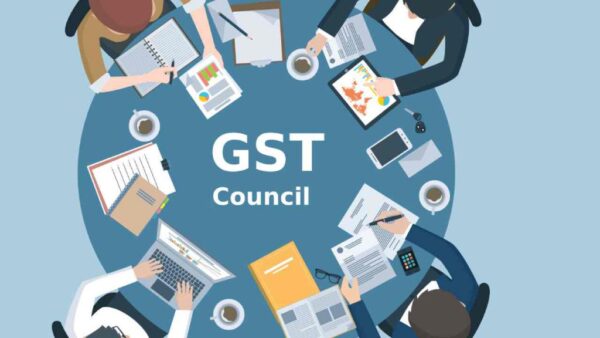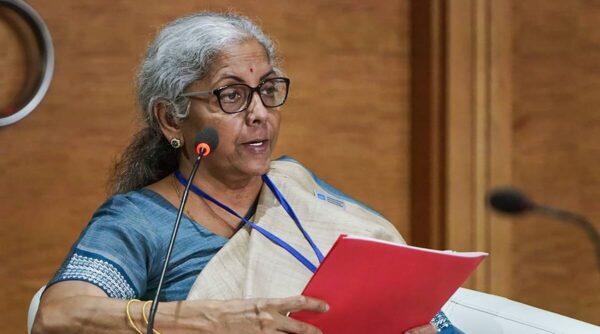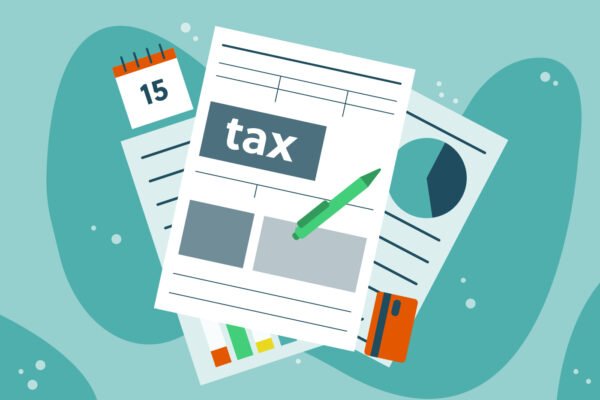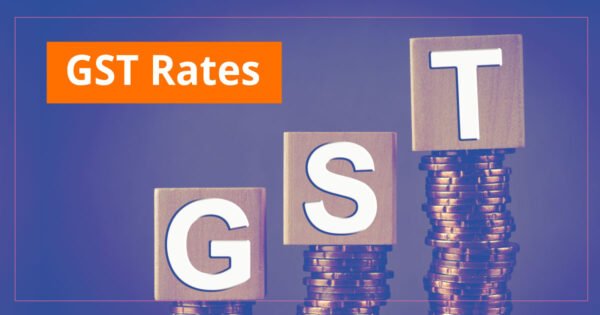The GST Council announced tax rate changes

The GST Council announced tax rate changes
In its 47th meeting, conducted last week, the Goods and Services Tax (GST) Council made several rate revisions to fix an inverted duty structure and remove some exemptions, which may serve as a prelude to a future revision of all tax slabs and rate rationalisation.
The GST exemption has been removed from “pre-packaged and labelled” retail packs, including food items like curd, lassi, puffed rice, wheat flour, and buttermilk; however, items sold loose or unlabelled will continue to be exempt. These changes are expected to have the most significant impact on consumers. The new rates take effect on July 18.

What is the GST Council, and what does it do?
After both Houses approved the Constitutional (122nd Amendment) Bill of Parliament in 2016, the Goods and Services Tax regime went into effect. The President then gave his consent after the state assemblies had approved it of more than 15 Indian states.
According to Article 279A (1) of the modified Constitution, the President established the GST Council, a combined forum of the federal government and the states.
The Union Minister of State (Finance) from the Center and the Union Finance Minister (Chairperson) are members of the Council. A minister in charge of finances, taxes, or any other minister may be proposed for membership by each state.
Why was the GST Council set up?
The Council is responsible for “making recommendations to the Union and the States on major GST-related issues, such as the commodities and services that may be subject to or excluded from GST, model GST Laws,” as stated in Article 279 of the Constitution.
It determines the different GST rate slabs.
For example, a panel of ministers’ interim report recommended levying a 28% GST on horse racing, online gaming, and casinos.
What has changed this time?
The current gathering is the first since the Supreme Court ruled in May this year that the GST Council’s recommendations are not legally binding.
The court asserts that Article 246A of the Constitution gives the federal government and state legislatures “simultaneous” authority to establish laws regulating the GST and that the Council’s recommendations “result from a joint discourse comprising the Union and States.” Because they believe states can be more adaptable in embracing the proposals as they are suited for them, certain states, notably Kerala and Tamil Nadu, commended this.
The subject of extending the GST compensation regime past June 2022 will probably be the main topic of discussion at the council meeting. States were assured through this unique process that the new GST system would not impact their revenue. Already, several governments are pressing for the continuation of the payout.
The Council had previously decided to extend the payment of the compensation cess until 2026, but only to pay back the loans taken out to compensate governments following the pandemic.

What changes did the GST Council announce now?
The GST Council examined the proposals of four ministerial teams on rate rationalisation, the transportation of gold and precious stones, system improvements, and gambling establishments such as casinos, racetracks, and internet gaming.
The interim report of the Group of Ministers (GoM) on rate rationalisation, led by Karnataka Chief Minister Basavaraj Bommai, addressed the removal of exemptions and the correction of the inverted tariff structure. To continue working on tax slab adjustments and rate rationalisation, the GoM has been granted a three-month extension.
The GoM on casinos, horse racing, and lotteries had already decided on a uniform 28% tax on all three activities. Still, it has now been given an additional 15 days to consider its suggestions. These recommendations will then be discussed at the upcoming GST Council meeting, which is anticipated to take place in the first week of August in Madurai.
The correction of the inverted duty structure results in a rate increase of 18 per cent from 12 per cent for household items like LED lamps, printing/drawing ink, power-driven pumps, Tetra Pak, solar water heaters, finished leather, and cut and polished diamonds. The check price will be subject to an 18% GST charge.
Additionally, exemptions for pre-packaged and pre-labelled foods will be revoked, including cereals, buttermilk, curd, lassi, paneer, jaggery, wheat flour, puffed rice, and meat and fish (except fresh and frozen). These food items will henceforth be taxed at 5%, the same rate as branded goods. Additionally, products like edible oil and coal would not be eligible for the reimbursement of accrued input tax credits.
A 12 per cent GST will now be charged on hotel rooms with rent up to Rs 1,000 per day, and a 5 per cent GST will be charged on hospital rooms with rent over Rs 5,000 per day. Exemptions were also eliminated for room rents (excluding ICU). GST rates on ostomy/orthopaedic appliances, commodities, and passengers transported by ropeways have been reduced from 18% to 5% and from 12% to 5%, respectively (with input tax credit).
The GoM on system improvements has recommended additional steps, such as biometric authentication, geo-tagging, using electricity data, and real-time monitoring of bank accounts for physical verification at the time of registration for high-risk taxpayers. Also agreed was the requirement that states produce e-way bills with a minimum threshold of Rs 2 lakh for transporting gold and precious stones within their borders.
According to officials, these compliance checks and tariff adjustments should generate Rs 15,000 crore in revenue each year.

Why have the rate changes been undertaken?
Numerous rate modifications have been made since the GST was implemented in July 2017, impacting the income stream that the epidemic made worse. Given that the guaranteed compensation mechanism for states for five years for revenue losses arising from the implementation of the GST ended in June and the Council did not take any solid decision to extend it despite at least a dozen states requesting it, rate rationalisation measures also assume significance.
Despite an increase in GST collections, experts predict that FY23 will be a challenging year for governments relying heavily on compensation.
Worries about disputes and revenue leakage prompted the abolition of pre-packaged item exemptions. It was observed that some businesses were abusing the exemption for unlabeled food goods by failing to register them. For instance, it is known that there were worries that a maker of branded rice was selling goods with a similar label that had not been registered as a brand and was therefore being sold under the exempted category.
The GST Council resolved to look at a number of actions, including rate rationalisations to fix the inverted tax structure and overhauling the rate structure going forward to augment revenues last year after taking note of the revenue trend sliding below the revenue-neutral rate levels. The decision was made four years after the introduction of the GST in recognition of the financial strain that a series of rate reductions spanning more than 500 items over these years had placed on the finances of both the federal government and state governments due to lower-than-anticipated revenue growth.
Within a year of the July 2017 rollout, the GST Council cut rates. It was anticipated that the rate reductions on more than 350 commodities out of the 1,211 total items in the five major categories of zero, 5%, 12%, 18%, and 28% under GST would cause a revenue loss of roughly Rs 70,000 crore per year.
When the taxes on output or the finished good are lower than the taxes on inputs, the duty structure is inverted, leading to an inverse buildup of input tax credits that must typically be refunded. Inverted duty structures led to refunds of Rs 5,500 crore and Rs 2,000 crore for industries like mobiles and footwear.
The inverted duty structure was corrected for mobiles (March 2020) and footwear (September 2021). It was decided to correct it for textiles in September 2021 but was later withdrawn in a specially-called one-agenda meeting in December 2021. The GoM on rate rationalisation was subsequently given the additional responsibility of investigating inversion in the textile industry and other industries like tractors, dinnerware, aggarbatti, a few agricultural machines, cutlery, and pharmaceuticals.

GST rate hikes: What items will now become expensive?
The 47th meeting of the two-day GST council took place in Chandigarh. It decided to lower the tax rates for hotels that charge no more than Rs 1,000 per day for stays under the twelve per cent tax bracket and packaged foods like milk, curd, and paneer and unpackaged foods like rice and wheat.
The Council, which was presided by Nirmala Sitharaman, Union Finance Minister, also suggested classifying under the 5 per cent slab dried leguminous vegetables, makhana, wheat or meslin flour, jaggery, puffed rice, organic food, manure, and compost.
At the Council meeting, which was also attended by States through their representatives, it was suggested that the tax rate be raised from 5 to 12 per cent for solar water heaters and finished goods like leather products and from 12 to 18 per cent for things like printing ink, LED lamps, and drawing supplies.
Unpackaged, unlabelled, and unbranded goods will remain exempt from the GST.
The Council also approved the state finance ministers’ recommendations on GST system changes, which suggested biometric authentication of high-risk taxpayers and real-time bank account confirmation.
The meeting will continue on Wednesday with potentially tense discussions regarding the extension of the GST compensation plan, which was launched on July 1, 2017, for a five-year period that is about to come to an end and which is intended to compensate States for revenue losses caused by the implementation of the GST.
The majority of States claim to be still experiencing financial difficulties; hence they frequently call for the continuation of the plan.
Only five of the 31 states and UTs have income increases more than the guaranteed revenue rate for states under the GST in the years 2021–2022, according to data on revenue growth obtained for the Council meeting: Arunachal Pradesh, Manipur, Mizoram, Nagaland, and Sikkim.
According to a Reserve Bank analysis, the weighted average tax rate under the GST decreased from 14.4% at the time of its inception to 11.64% in September 2019.
The taxability of cryptocurrencies and other digital assets, existing legislation governing their regulation, and their classification as either products or services are still hot topics that need to be discussed.
Discussions about casino transactions, online gaming, and horse racing will also be held that fall under the 28 per cent tax bracket.
To prevent evasion, the Council encouraged states to determine the threshold at which the electronic bill must be required for intrastate movements of gold, gold jewellery, and precious stones.
State ministers suggested increasing the threshold to Rs 2 lakh and above.
What will be the impact on consumers?
During the Goods and Services Tax (GST) Council’s 47th meeting, numerous adjustments and significant decisions were made. Consumers will be immediately impacted by the rate increase in the most fundamental way.
To improve tax administration for the government and reduce the compliance burden for taxpayers, the Indian government implemented the Goods and Services Tax (GST) in 2017. The government combined all indirect taxes into one new tax called GST and introduced slab rates for various goods.
The government has made numerous revisions to the slabs since the introduction of the GST in 2017. The GST Council’s recent amendments are anticipated to generate Rs 15,000 crore in revenue annually.
Nirmala Sitharaman, the finance minister, explained that the most recent rationalisation of the GST rate was necessary to restore revenue neutrality in the transition to GST.
According to reports, the Council also approved several measures to stop fake businesses from registering for GST.
The hike in GST rates will ultimately make life more difficult for the average person.
Companies anticipate raising prices for packaged foods like wheat flour, paneer, curd, and lassi, as well as commonly used commodities like LED bulbs, adding to inflationary fears. According to state government officials, a tax rate of 12% for hotels with rates below Rs 1,000/day is anticipated to impact the tourism industry in non-metro cities. However, because these items have a low weight in the index, the overall retail inflation rate based on the CPI is not anticipated to be significantly affected.
“It’s unlikely that this will have a big effect on inflation. In contrast to products like gasoline and diesel, which have a more significant weight in the index, some of these items, like spoons and knives, are not frequently purchased and have a very tiny weight in the CPI. Even if we assume that all hotels charge less than Rs 1,000 per day, hotels for accommodation weigh 0.00904 in the CPI; therefore, a 12% rise in GST will result in a 0.11 basis point increase.
If all-electric bulbs and tube lights are assumed to be LEDs, the CPI will rise by 0.97 basis points. A 0.47 basis point increase in curd is possible. Therefore, it is unlikely to increase CPI inflation considerably,” Devendra Kumar Pant, Chief Economist, India Ratings, said.
Edited by Prakriti Arora




